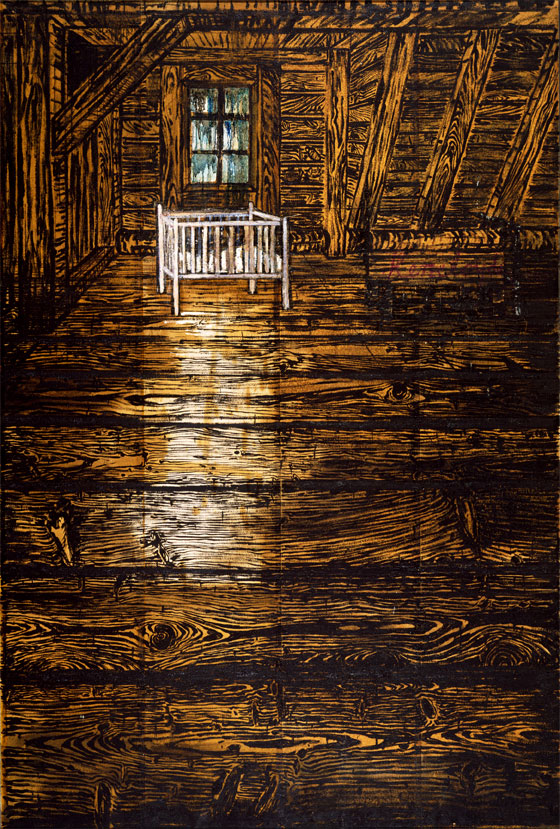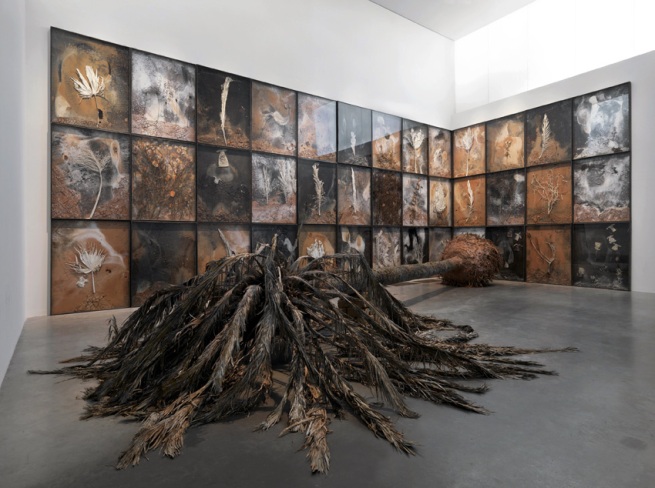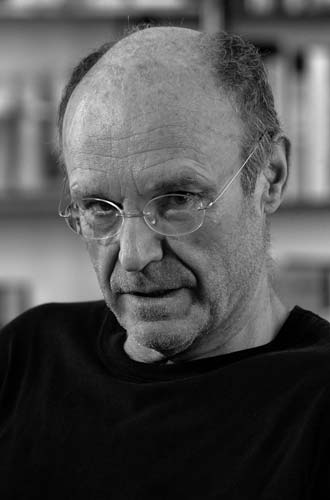Anselm Kiefer (born on 8 March 1945, in Donauschingen, Germany) is a German contemporary artist. He used mixed media such as straw, ash, clay, lead and shellac in his works. He developed themes about German history particularly reflected the Nazi rule during Second World War. His painting, sculpture and installation have made him one of the most important artists among his generation. His spiritual paintings reflect the ambivalence and his feeling towards the German nationalism and its impact on history. He criticized the legacy and called up the German history.
In 1966, Kiefer abandoned his Law and Romance Language Studies at University of Freiburg to study at art academies in Freiburg, Karlsruhe and Dusseldorf. By 1970s, he studied art formally under Joseph Beuy, another German comtemporary artist. Kiefer started working with gloss, straw, wood and plant parts to develop and enrich his works. He aimed to show that the materials in a way in which they were not disguised could be represented in their natural form. His style was heavily influenced by Beuy - the Neo-Expressionism.
Kiefer was awarded the Wolf Prize in 1990. In 1999, the Japan Art Association awarded him the Premium Imperiale for his outstanding achievements in the art field. In 2008, he was awarded Peace Prize of the German Book Trade. Kiefer gains international attention and have contemporary art exhibitions worldwide.
 |
| Parsifal I, 1973 |
His subject-matter mainly ranges over mythology and history, alchemy and the nature of belief in the early 1970s.
 |
| Parsifal II, 1973 |
Kiefer's works were also influenced by Paul Celan's poems about German history and the horror of the Holocaust, which have the spiritual concepts of Kabbalan. One of the examples is Margarethe. It was inspired by Celan's poem "Todesfuge"
 |
| Margarethe, 1981 |
In general, Kiefer's works are in musty, depressive and destructive style. His works provoke negative feelings. He incorporated with different media on his works and the paintings have very thick and rich texture. Departure from Egypt, 1984 is an example of his rough brushwork. It is sort of abstract formed by found subjects and other materials. It has a very destructive and violence-like scene. Innenraum is one of my favourite paintings of Kiefer. It has simplex colour tone. The natural light get through from the glass ceiling creates strong contrast with the darkness in the room. This painting also has high extensity.
 |
| Departure from Egypt, 1984 |
| Innenraum, 1981 |
By the mid 1980s, Kiefer widened his theme from a focus on Germany's role in civilization to the fate of art and culture. His work not only involved national identify and collective memory, but also occult symbolism, theology and mysticism.
 |
| Osiris und Isis, 1985-1987 |
Osiris und Isis is based on an Egyptian myth but Kiefer also connected the painting with the allegory of the Nazi rules in World War II.
 |
| Palm Sunday, 2006 |
This is a mixed media installation by Kiefer. It consists a 30 ft long palm tree surrounded by 44 paintings on the wall.
My thoughts
Anselm Kiefer has been one of my favourite contemporary artist since high school. During sixth form I had a quick research on him for my art project. It is quite rare to find artists that are very into depressive style and I was so fascinated of his paintings. Also, I found Kiefer is quite different from other artists, he is patriotic - which was the main ambition for him to produce artwork. Kiefer illustrated his thoughts and beliefs completely in his works. His depressive paintings shows he felt biting about the German history and we can see his emotional journey throughout his work. I like the fact that his paintings implied the horrible side of nationalism and fascism which provoke thoughts, arouse reflection and send strong message to the audience. I appreciated that he has faith art can heal a traumatized nation and he keens on developing artwork as a medium of approaching the world with the German history and culture. We can rarely find contemporary artists have such deep mind and positive attitude to implicate humanity and ethical questions in artwork.
On the other hand, I like the style and skill that Kiefer has adopted in his paintings. His paintings are mostly in dark and musty tone, it would be difficult to show clear three-dimensional objects and good extensity. But in all his interior paintings he tackled the difficulties well. Also, he was a risk-taking artist, putting different found objects in his works and did a lot mixed media experiment, which created unique effects in his artwork. He inspired me a lot on my final year Fine Art project - dare to put everything I found in the paintings and mix all the possible materials together.
I like Kiefer's works not only because of the aesthetic reasons, but also the deep meaning behind each paintings. He is a great influence in a lot of aspects. I hope more people will know about him and his paintings.
Reference:
http://artblart.com/2011/01/03/exhibition-anselm-kiefer-at-baltic-centre-for-contemporary-art-gateshead/
http://en.wikipedia.org/wiki/Anselm_Kiefer
http://www.sfmoma.org/explore/collection/artwork/171
http://www.c4gallery.com/artist/database/anselm-kiefer/anselm-kiefer.html
http://www.moca.org/pc/viewArtWork.php?id=32















